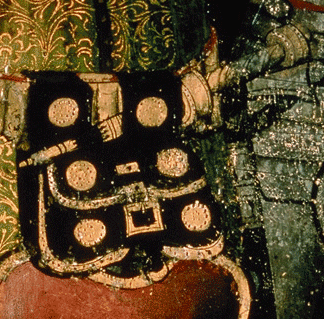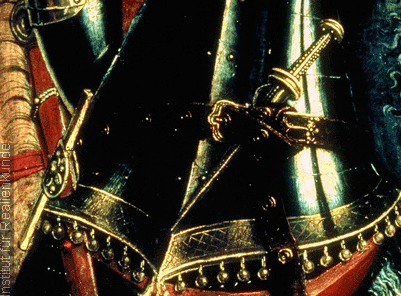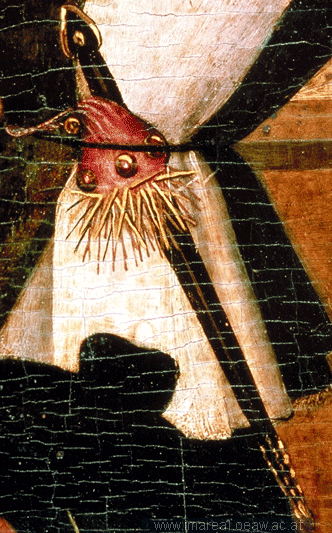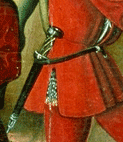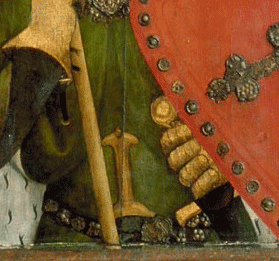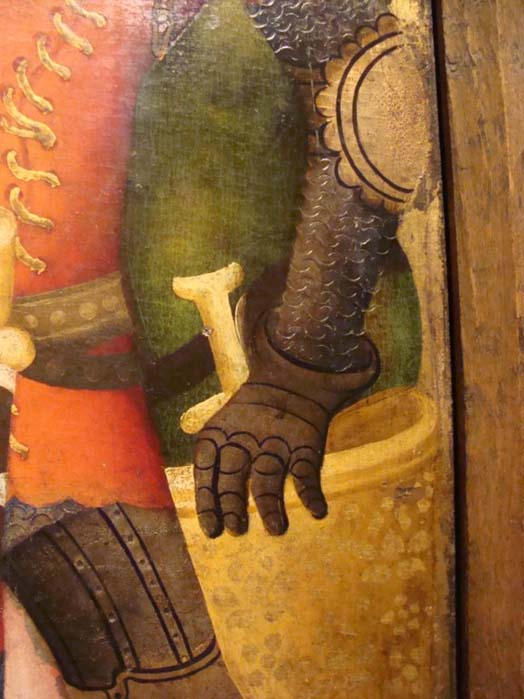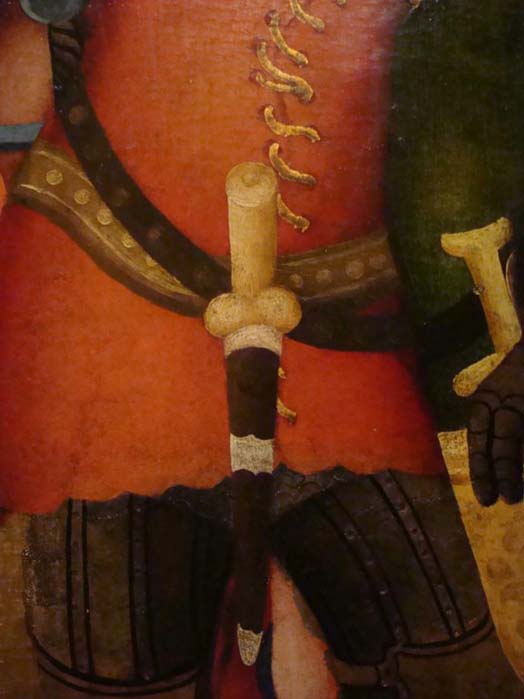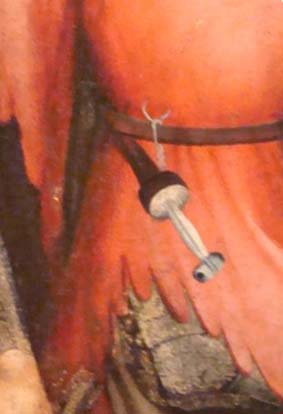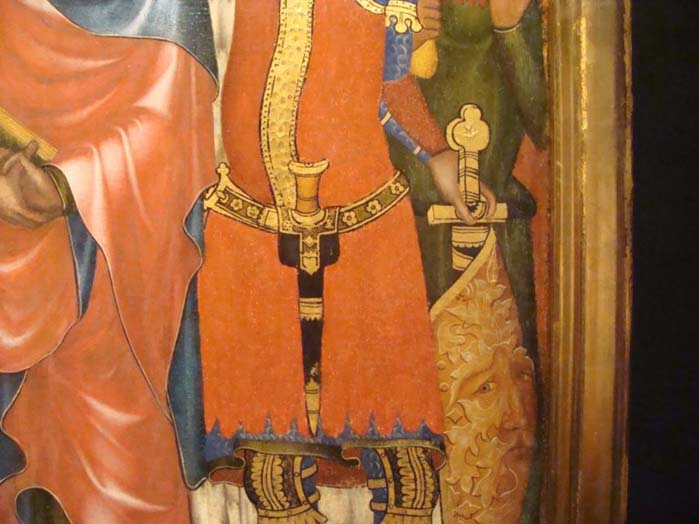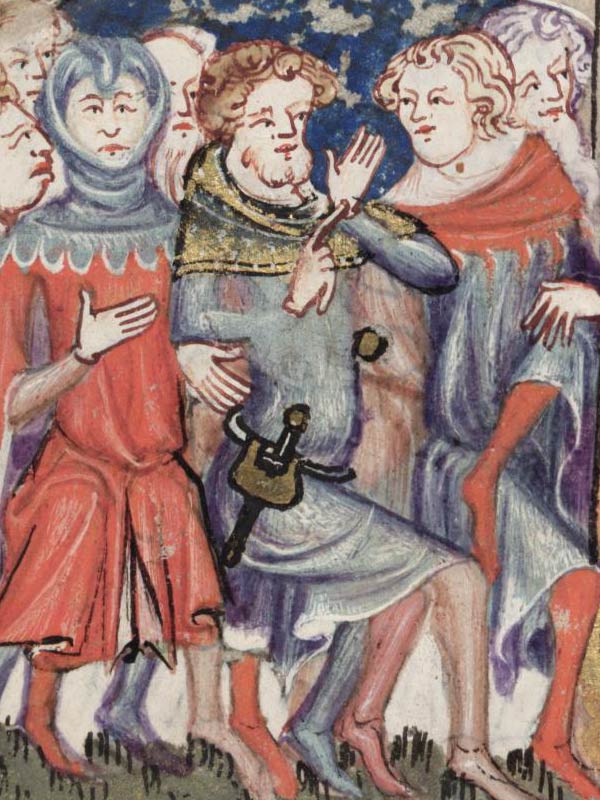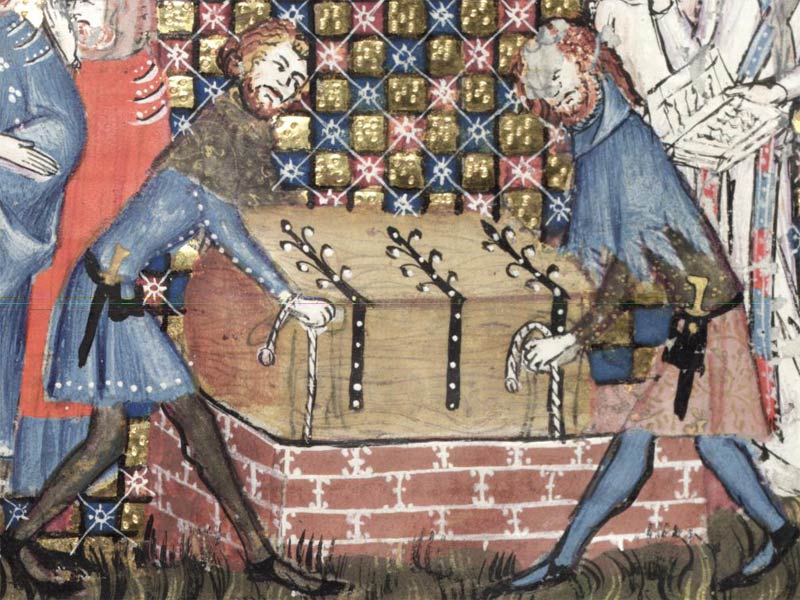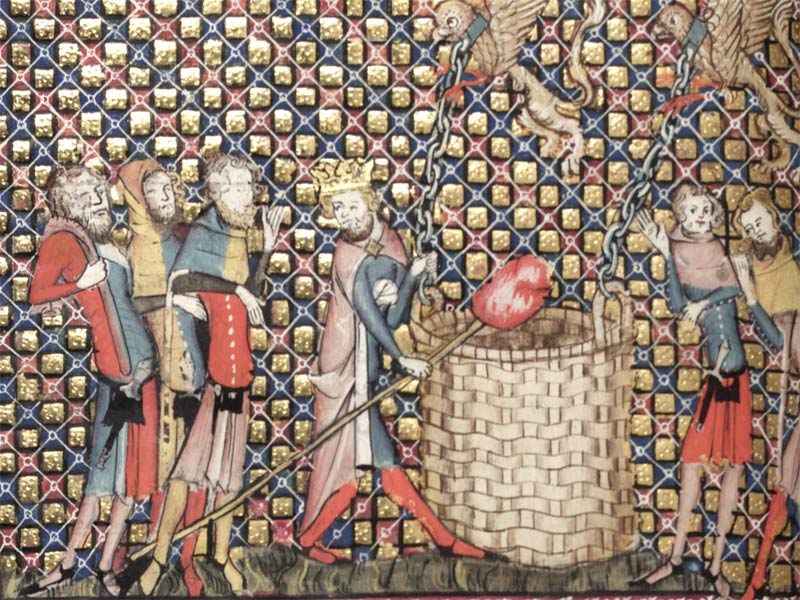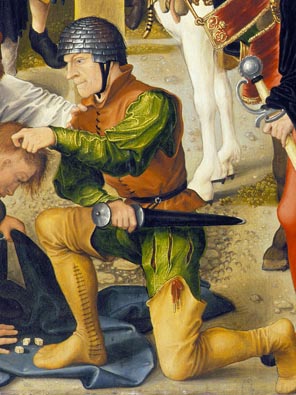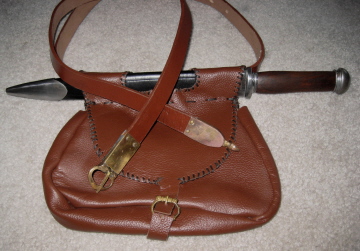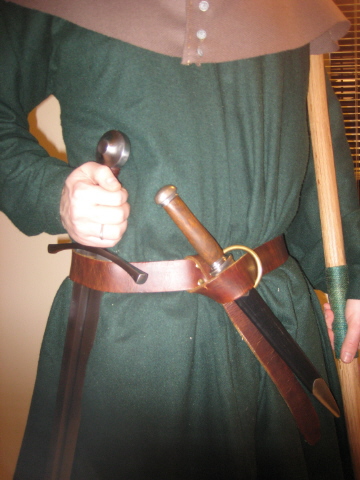Posts: 159 Location: Metrowest Boston
Sun 17 Aug, 2008 9:14 am
Someone earlier referenced the Tres Riche Houres... it is the January page that he meant to reference...
and indeed the "problem" you are experiencing is illustrated clearly there.
Perhaps it wasn't considered a "problem" under those circumstances, in that I note one of the feasters (I can't help but think of Snickers now) is using a
seax-like knife, while his dagger remains sheathed.
See attachment.
When I think on this, it occurs to me that hilt-downish certainly brings the dagger's display into prominence. Almost like a gunfighter with his pistol belt on low.
Perhaps there is a message being sent that way?
You have to think of an era in which padded cod-pieces was normal for men - we'd think of it as crude nowadays.
 Attachment: 110.69 KB
Attachment: 110.69 KB
[ Download ]
